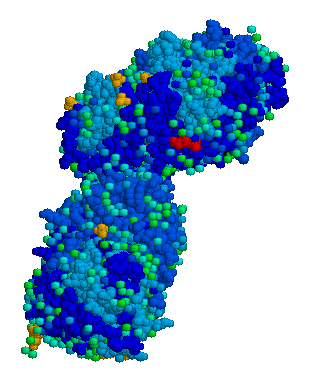The first drug to treat Gaucher's disease, a rare, inherited disease that causes anemia and enlargement of the liver and spleen, was approved by FDA in April.
The drug, Ceredase (alglucerase), replaces a missing enzyme that is responsible for breaking down glycolipid, an important body fat. Without the enzyme, glycolipid accumulates in the spleen, liver and bone marrow. The resulting anemia and enlargement of the liver and spleen may cause symptoms such as grossly distended abdomen, fragile and painful bones that may fracture repeatedly, increased bruising and bleeding, and fatigue.
FDA has approved Ceredase to treat moderate-to-severe Type I Gaucher's disease, the most common form. (Two other, even rarer, forms of Gaucher's disease, Types II and III, cause lipid storage in the nervous system, resulting in progressive brain damage and death.) Of the approximately 10,000 to 15,000 Americans with Type I Gaucher's disease, about 3,000 have symptoms serious enough to need treatment. Previously, severe cases of Type I Gaucher's disease were treated by spleen removal and bone marrow transplants, both of which carry substantial risks.
Type I Gaucher's disease primarily affects Jews of Eastern European descent, as many as 1 in 10 of whom carry the defective gene.
Scientists with the National Institute of Neurological Disorders and Stroke tested the effectiveness of Ceredase in a 10-month clinical trial with 24 Type I Gaucher's patients, 12 of whom received intravenous treatment every two weeks. The enzyme replacement therapy decreased spleen enlargement and reversed anemia in all patients and boosted platelet counts and reduced liver size in several patients.
Through its Treatment IND Program. FDA made Ceredase available to desperately ill patients before final approval. The agency also designated the products as "orphan" drugs, a status that gives companies financial incentives to research and seek approval for products used by small patient populations.
Ceredase will be marketed by its commercial developer, Genzyme Corp. of Cambridge, Mass.
COPYRIGHT 1991 U.S. Government Printing Office
COPYRIGHT 2004 Gale Group



